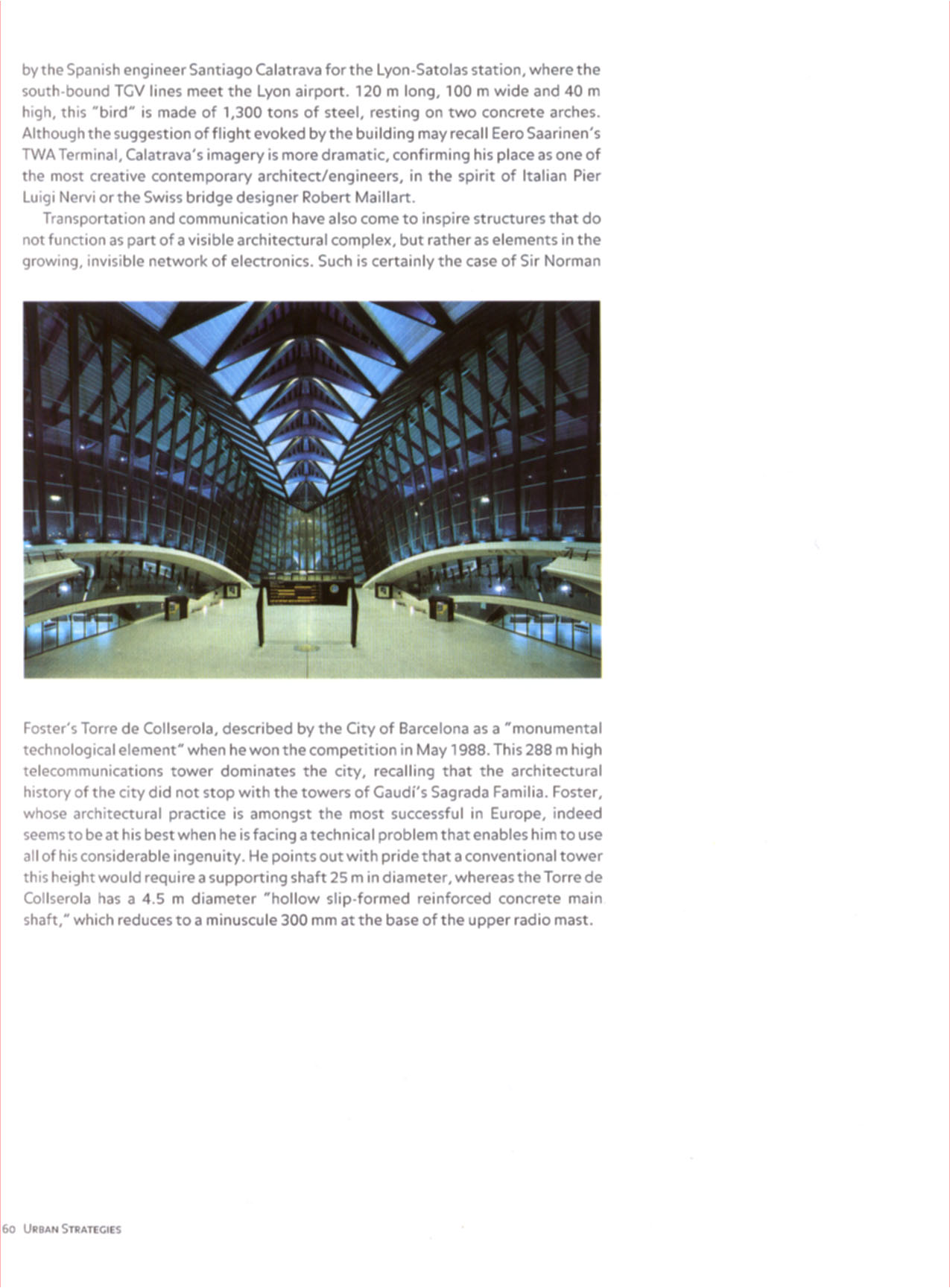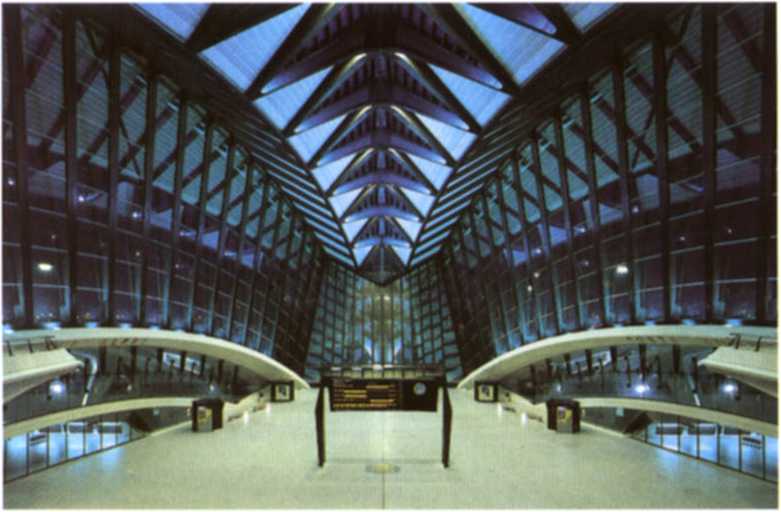New Forms Taschen 055

by the Spanish engineer Santiago Calatrava for the Lyon-Satolas station, where the south-bound TGV lines meet the Lyon airport. 120 m long, 100 m wide and 40 m high, this "bird” is madę of 1,300 tons of Steel, resting on two concrete arches. Although the suggestion of f light evoked by the building may recall Eero Saarinen's TWA Terminal, Calatrava's imagery is morę dramatic, confirming his place as one of the most creative contemporary architect/engineers, in the spirit of Italian Pier luigi Nervi or the Swiss bridge designer Robert Maillart.
Transportation and communication have also come to inspire structures that do not function as part of a visible architeaural complex, but rather as elements in the growing, invisible network of electronics. Such is certainly the case of Sir Norman

Foster's Torre de Collserola, described by the City of Barcelona as a "monumental technological element” when he won the competition in May 1988. This 288 m high telecommunications tower dominates the city, recalling that the architectural history of the city did not stop with the towers of Gaudi's Sagrada Familia. Foster, whose architeaural praaice is amongst the most successful in Europę, indeed seems to be at his best when he is facing a technical problem that enables him to use all of his considerable ingenuity. He points out with pride that a conventional tower this height would require a supporting shaft 25 m in diameter, whereas the Torre de Collserola has a 4.5 m diameter "hollow slip-formed reinforced concrete main shaft," which reduces to a minuscule 300 mm at the base of the upper radio mast.
6o Urban Strategies
Wyszukiwarka
Podobne podstrony:
New Forms Taschen 054 Although the influence of the French projects may only be peripheral in this i
New Forms Taschen 118 1 _L „L- the modern purist tenants, and he may be right about that
New Forms Taschen 144 architecture: "The installation represents the work site of an enormous b
New Forms Taschen 155 Right RoTo Gcmim Learning Center Morristown. New Jersey. 1995 Uscd by the Gemi
New Forms Taschen 012 tecture, preferring to explore the new horizons offered by the Computer. As he
60530 New Forms Taschen 086 JaparTs Thirst for Art The economic miracle of Japan. although dulled
New Forms Taschen 198 Although less poetic than his Unazuki Meditation Space, the Takaoka Station in
więcej podobnych podstron